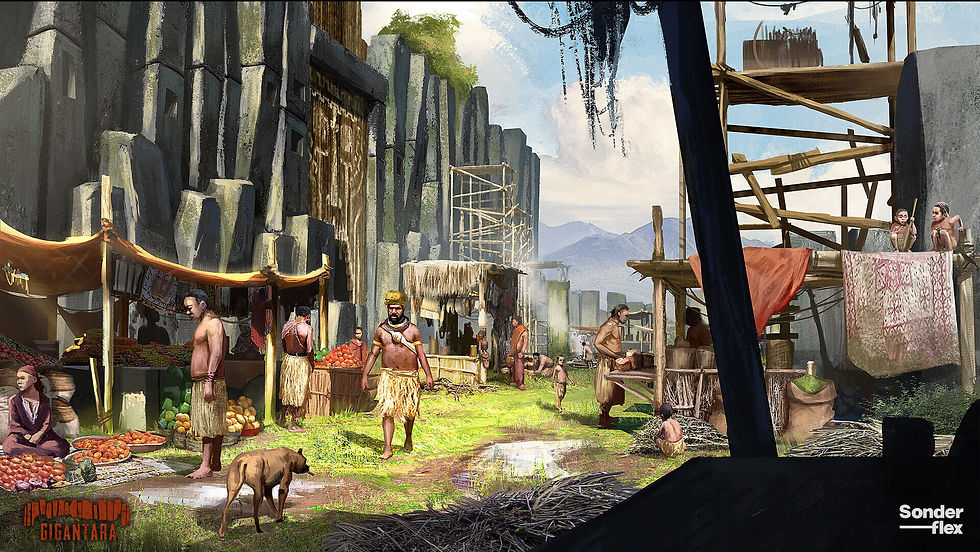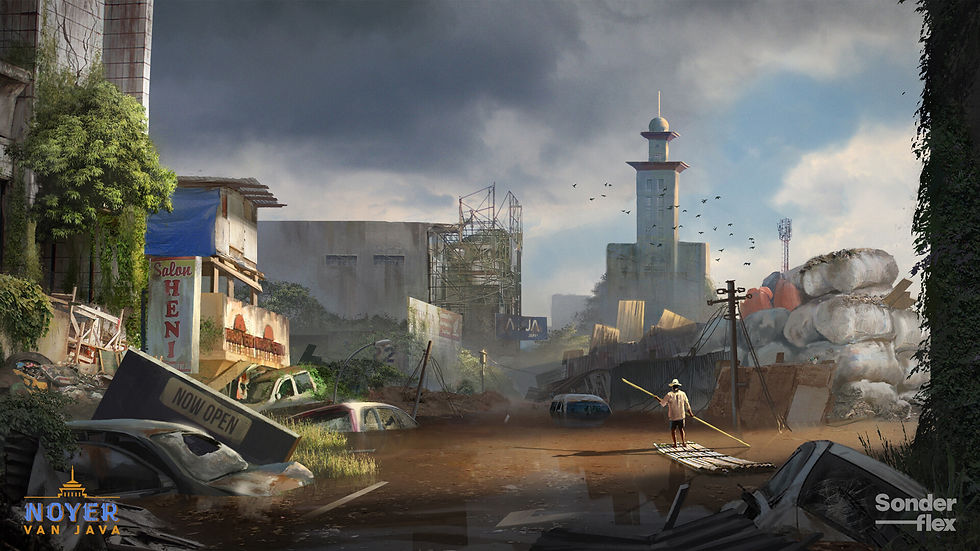The Role of Illustration in Boosting Your TCG Games Sales
- Sonderflex Studio
- Jul 12
- 5 min read
Updated: Jul 13

Sonderflex Studio - In the fast-evolving world of TCG games (trading card games), illustration plays a role far more critical than simple decoration. Art is one of the first things players and collectors notice. It defines the tone of your game, sets expectations for the gameplay experience, and creates emotional investment. In an industry driven by first impressions and long-term engagement, illustration has the power to significantly influence sales.
From pre-launch marketing to long-term collector value, illustration touches every phase of a TCG game’s lifecycle. In this article, we explore how well-crafted illustration contributes to visibility, credibility, and ultimately, commercial success.
See also : Choosing Art Style for Different Games
Why Illustration Matters in the TCG Games Market
In most tabletop game formats, components like tokens or boards may dominate the visual landscape. But in TCG games, individual cards are the core product, both in gameplay and in collectability. The illustration on each card carries narrative, identity, and aesthetic appeal in one frame.
Your game could feature innovative mechanics and clever rules, but without strong visual design, it risks being overlooked. Why? Because in TCGs, art drives two essential outcomes:
Emotional Connection: Illustration helps players feel immersed in your game world.
Marketability: Illustration is what gets shared, reviewed, and remembered.
First Impressions: Art as a Conversion Tool

In a digital marketplace where potential customers scroll through hundreds of products, illustration acts as the first filter. It decides whether a potential buyer pauses to take a closer look.
Whether on social media, an online store, or a convention shelf, your game will be judged in seconds. Great art invites that second look.
A few strategic ways illustration boosts conversion:
Social media virality: Players share beautiful cards, not well-balanced rulebooks.
Retail impact: A high-impact box illustration or card preview can drive impulse buys.
Reviewer engagement: Games with strong visual assets are more likely to be selected for previews or video content.
Illustration is the reason someone clicks. Your game’s mechanics and lore are what make them stay.
Creating Identity Through Visual Language

Every successful TCG has a distinctive visual identity, a style that feels consistent across the entire product line. This consistency builds brand recognition and trust. Over time, players associate a certain look and feel with your game, just as they do with a favorite comic series or animated show.
Your illustration style communicates:
Genre cues: Is this a dark fantasy game? A futuristic sci-fi universe? A mythic high fantasy saga?
Audience alignment: Child-friendly? Collector-driven? Competitive scene-focused?
Narrative tone: Is your world tragic and dramatic, or bold and adventurous?
At Sonderflex Studio, we help clients define this visual language early in the development process. The goal is to ensure that every illustration from your first promotional teaser to the hundredth card in your second expansion speaks with the same voice.
Character Design as a Sales Multiplier

Players don’t just buy games; they buy into characters. That’s why iconic character design is one of the most powerful tools in driving sales for TCG games.
Memorable character illustrations can:
Encourage players to collect entire factions or sets
Increase social media engagement through fan art and cosplay
Strengthen emotional connection and long-term investment in the lore
For example, games like Flesh and Blood have built entire competitive metas around specific heroes each with distinct visual profiles. When players recognize and connect with a character’s look, they’re more likely to explore that character’s deck or mechanics.
In the collector’s market, well-designed characters can even increase the perceived value of rare cards. A rare card with sub-par art might feel disappointing. But a beautifully illustrated chase card becomes an event in itself.
Illustration’s Role in Kickstarter and Pre-Sales

If you're crowdfunding your TCG as many indie developers do your illustrations are not just part of the product. They are the product during the campaign phase.
Before players can experience gameplay or mechanics, they’ll see:
Card previews
Box and packaging art
Banner images, stretch goal visuals, lore illustrations
Every image you post is an opportunity to build anticipation, attract backers, and convey professionalism.
Campaigns with polished, professional artwork consistently outperform those with placeholder or amateur visuals. They send a clear message: “This is a finished product worth your attention.”
Illustration also supports campaign storytelling. Previewing a dramatic scene or faction battle in art form helps players imagine the universe behind your game, turning them from browsers into believers.
Illustration as a Tool for Lore and World-Building

A strong narrative can turn a good game into a great franchise and illustration is the most efficient way to communicate lore in a visual format.
Each card in your game should be a window into the world. The most successful TCGs use illustration to:
Reveal character arcs or rivalries
Depict key historical events in the lore
Establish location-specific themes and mood
Show faction identity and cultural diversity
This level of world-building is what keeps players invested between expansions. When done right, it transforms gameplay into storytelling and collectors into fans.
Illustration isn't just about beauty; it’s about deepening the lore experience with every visual choice.
Art Consistency and Production Standards

Inconsistency in illustration is one of the most common pitfalls in indie TCG development. When different cards have wildly different visual styles, even if each is technically well-executed, it creates dissonance. The game feels unprofessional or unfinished.
Maintaining consistent quality and tone across hundreds of illustrations requires:
A strong visual guide or art bible
Clear art direction during production
A reliable team or studio that understands the brand
At Sonderflex Studio, we specialize in long-term partnerships where we take ownership of both quality and consistency. From initial concept art to full card production, our artists work within defined visual parameters to ensure a seamless result.
The result? A game that feels intentional, not cobbled together.
Long-Term Value: Art and Reprints

Illustration doesn’t just impact the initial sale. It also plays a role in your game’s lifecycle, especially when it comes to expansions, special editions, or reprints.
Alternate-art promos can boost pre-orders
Foil editions with unique art become collector’s items
Special reprint sets (e.g., “Classic Art” collections) attract returning players
Art has value beyond gameplay. A player might already own the functional version of a card, but they’ll still purchase a new variant if the illustration resonates with them. This is one of the most underappreciated revenue channels in TCG development.
Conclusion
In the trading card game industry, illustration is far more than visual flair. It’s a core business asset, one that touches every aspect of product development, marketing, and long-term player engagement.
For indie developers and established publishers alike, investing in high-quality, cohesive illustration is not optional. It’s essential.
Give Your Game Remastering Project a Visual Quality Upgrade with Sonderflex Studio's Expertise

Sonderflex Studio offers specialist visual design skills that are not only captivating but also effective. Game Remastering requires expertise able to deliver the same feeling and message as when the game was first played, yet looking twice as appealing.
Sonderflex Studio's visual design also considers the creative process with in-depth research into which remastered game values can and cannot be changed. Drop Sonderflex Studio a hello, and let's discuss further!


